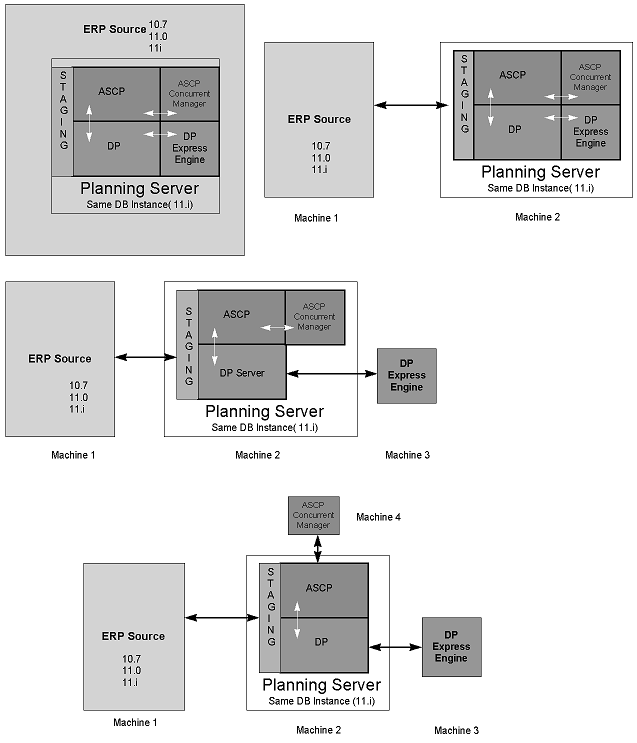ASCP Setup
Oracle Advanced Planning Suite has a component architecture that separates the transaction data and associated processing (for example, inventory receipts and order entry) in a source instance from the planning calculations done in a destination instance. This allows planning calculations to be done on a different physical machine
than the machine that performs transactions and results in better system response. It also allows planning calculations (demand planning, inventory planning, supply planning and order promising) to be applied simultaneously to information from across multiple source instances, which is useful when transaction information for a global supply chain is spread across multiple instances. Oracle Demand Planning also uses athird instance, an Express database, to hold data while multidimensional manipulation of demand data occurs.
The source can be any ERP system, but out-of-the-box integration to the Oracle Advanced Planning Suite destination instance (planning server) exists in some cases but not in all cases.
Set up for Oracle Advanced Planning Suite consists of steps for the source, steps for the destination, and steps for Express.
APS may be implemented in two possible configurations:
Centralized Planning
A centralized configuration implies that the ERP applications and APS share the same Oracle instance on one server.
Decentralized Planning
A decentralized configuration implies that the ERP applications and APS are executing within two separate Oracle instances, possibly on the same server.
- Both configurations are supported using a consistent architecture with the sole distinction being that the decentralized configuration requires the use of database links to pull data into the MSC data store.
- APS nomenclature employs Source and Destination when speaking of the ERP transaction data store and the planning data. Data, at the source, is collected into the destination or operational datastore (ODS) where planning activities occur. If a centralized configuration is implemented, both the source and destination are operating within the same Oracle instance.
The following figure is a flowchart illustrating the source and destination setup steps.
Multti-Machine Implementation

For small implementations, source, destination, and Express can reside on the same machine and be in the same instance.
For larger implementations where system throughput is more important, the various instances can be deployed on separate machines. A two-machine deployment configuration is appropriate when the size of the demand planning data is relatively small.
A three-machine deployment allows for the manipulation of high-dimensionality, large-scale demand planning data to occur on a machine separate from the planning calculations done on the planning server. The following figure illustrates this configuration.
The Advanced Supply Chain Planning concurrent manager may also be deployed on a separate machine.
Setup Flowchart
Question on DB instance
It is very informative regarding architecting ASCP and Demand Planning. if i go for a de-centralized architecture, as per your diagram, only one DB instance is required? i am refering to "Same DB instance" comment under planning server. Can you please clarify?
I thought the source and destination DB are two separate DB instances? correct?
Thanks in advance
Ravi